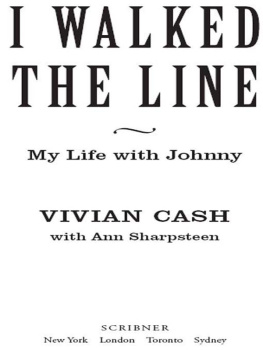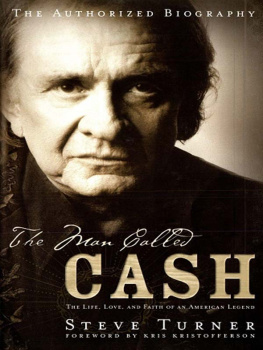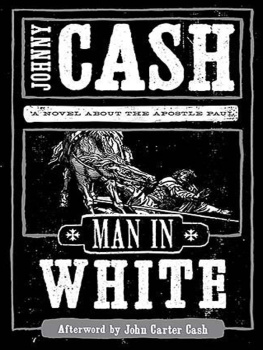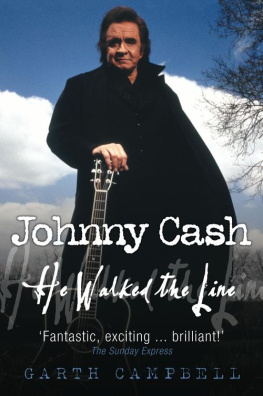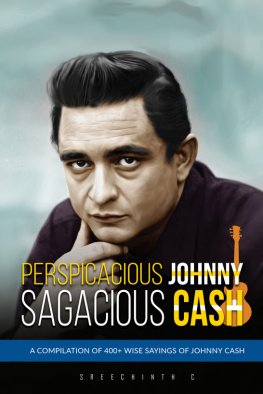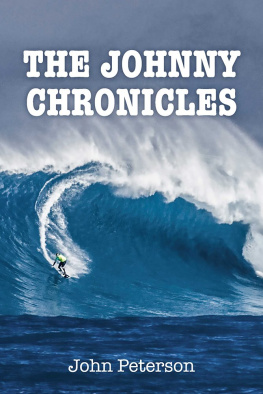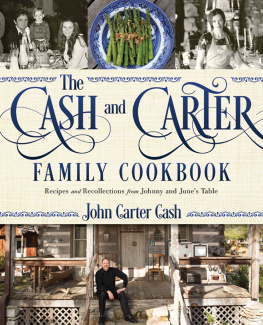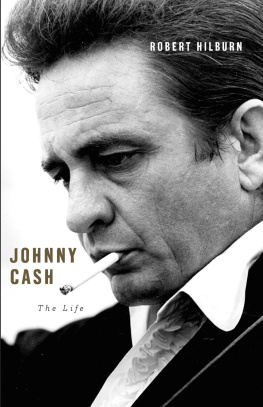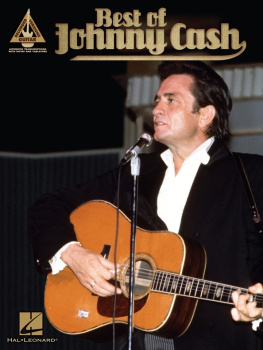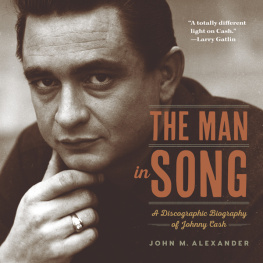

SCRIBNER
1230 Avenue of the Americas
New York, NY 10020
Copyright 2007 by Dick Distin and Ann Sharpsteen
All rights reserved, including the right to reproduce this book or portions thereof in any form whatsoever. For information address Scribner Subsidiary Rights Department, 1230 Avenue of the Americas, New York, NY 10020.
I Still Feel the Same About You by Dick Manning and Don Reid. Copyright 1950 (Renewed) by Music Sales Corporation and Davandon Music. All Rights Administered by Music Sales Corporation (ASCAP). International Copyright Secured. All Rights Reserved. Reprinted by Permission.
I Walk the Line written by John R. Cash. Copyright 1956, 1984 (Renewed) by House of Cash, Inc. Administered by Bug Music. All Rights Reserved. Used by Permission.
Photographs from the personal collection of Vivian Cash Distin appear courtesy of the author.
SCRIBNER and design are trademarks of Macmillan Library Reference USA, Inc., used under license by Simon & Schuster, the publisher of this work.
Library of Congress Cataloging-in-Publication Data
Cash, Vivian, 19342005.
I walked the line: my life with Johnny / Vivian Cash with Ann Sharpsteen.
p. cm.
1. Cash, JohnnyCorrespondence. 2. Cash, Vivian, 19342005Correspondence.
3. Country musiciansUnited StatesCorrespondence. I. Sharpsteen, Ann, 1967II. Title.
ML420.C265A4 2007782.421642092'2dc22
[B]
2006035966
ISBN-13: 978-1-4165-3862-2
ISBN-10: 1-4165-3862-3
Visit us on the World Wide Web:
http://www.SimonSays.com
For Rosanne, Kathy, Cindy, and Tara
so you may better understand just how much I loved your Daddy
I WALKED THE LINE
Hope is the thing with feathers
That perches in the soul
And sings the tune without the words
And never stopsat all
Emily Dickinson
FOREWORD
I n the fall of 2002, I was hired as a freelance writer/producer to produce a television documentary on the life of Johnny Cash for a division of MTV Networks. I remember leaving the production meeting after receiving the job and fielding congratulations, high fives, and pats on the back: Way to go, Ann! Johnny Cash, hes huge! Way to bag a big one!
A big one? Johnny Cashs name didnt exactly register on my personal list of artist big ones. James Taylor, maybe, or Sting, or Lyle Lovett, or Garth Brooksbut Johnny Cash? My exposure to anything Cash was limited at best.
In any event, I had twelve weeks to research Johnnys life, conduct on-camera interviews, write the shows script, approve visual elements, navigate the political minefield that was the approval process, edit the show, and deliver a master tape ready for air. It was during that process that I came to know Vivian.
My first order of business on the Cash project was to create a wish list of people with whom I wanted on-camera interviews: Johnny, June Carter Cash, legendary Sun Records executive Sam Phillips, Johnnys longtime bass player Marshall Grant, Johnnys manager Lou Robin, and so on. Upon learning that Vivian was Johnnys first wife and the mother of his four daughters, I added her name to my list as well. My line producer then began contacting each person, scheduling interviews and arranging for all the necessary travel and camera crews. Much to my surprise, Vivian politely declined my request. Whereas most people scrambled for face time in shows like the one I was producing, I would later learn that Vivian had little or no interest in such things. She was intensely private and wary of the media.
Ordinarily that would have been the end of the story. Given my tight deadline, I had no time to coax an unwilling subject. But something inside me prompted me to stop and call Vivian myself. She would later call it Gods hand.
Vivian never did agree to the on-camera interview for the documentary, but she and I became fast friends over the phone as I worked on the project. Before long we were speaking daily on the phone, for hours at a time, as our friendship grew. I found her refreshingly unassuming, warm and funny, and complex in an understated sort of way. On the one hand, she was a quiet, hesitant soul, not wanting to call attention to herself. On the other, she was a fiery Italian whose sense of right and wrong had clear lines of demarcation. She was uncompromising in her integrity, compassionate, and pure of heart. She was regal and elegant yet childlike. I was drawn to her.
But there was a brokenness about Vivian too. There was a sadness and a vulnerability. As time passed and the trust between us increased, she eventually shared with me the true story of what happened to her marriage to Johnny. I was shocked to learn that there exists a vast underlying story that nobody knows aboutregrettably a story markedly different from the one I had written and produced in my documentary (and that has been told in countless books and films). Through my friendship with Vivian, I would learn that in the realm of public knowledge and perception, some stories we have long believed to be true are not true at all.
As Vivian explained to me, the truth about many things in Johnnys life had become confused with stories for public consumption, and those stories had become confused with other stories invented to protect the careers and public personas of those closest to him, in the end making for a confusing mess. Its no wonder Kris Kristofferson once wrote of Johnny, Hes a walking contradiction/Partly truth and partly fiction.
I became intrigued, knowing the weight and truth of the story, to learn how Vivian was able to move forward. Just how did she get through it? How did she move on? How did she cope with the injustice? I expected answers, but she had none. She was still seeking reconciliation with the events and emotions of the past, and had been for years.
Vivian, I said to her one afternoon, you need to share your storyif only to help other women. I spoke not realizing that for years she had longed to do just that. She had longed to tell the world the truth. And she had longed to share her story with their four daughters: Surprisingly, she had never shared with them the full story of what happened. And she hoped that by telling her story she might be able to help other women who similarly suffered lost love. Indeed, Vivian had never stopped loving Johnny.
By Vivians own choice, the details behind the demise of her marriage to Johnny and the relationship they shared through the years have long remained secret. But after much prayer and considerationand comfortable with the fact that her children were grown and settled in their livesVivian made the decision to finally tell her story. To that end, she and I began working on this book, exploring and discussing her past and setting into motion a yearlong journey that she and I would take together.
Vivians story is a powerful one of long-kept secrets, lies revealed, prolonged injustice, betrayal, forgiveness, moving on, and the truth at long last being told. It is a story about the decent, God-fearing man that Johnny was. The Johnny that Vivian called her husband was sweet and vulnerable, a warm and loving husband and father, a tender lover. It is also a story about the people, events, and forces that changed him.
It is important to know that this book had the full support of Johnny himself, who insisted it was time for this story to be toldthough acknowledging that the truths revealed might be difficult for some to hear. And so, with Johnnys encouragement, Vivian brings forward nearly ten thousand pages of private, never-before-seen love letters that Johnny agreed should be shared with the world. They provide a mountain of evidence contradicting many misconceptions the world has about Johnny, reveal startling mistakes Johnny made along his way to becoming a champion for people of all races and stature, and share Johnnys touching confessions and apologies for behavior he later became deeply ashamed of. Moreover, the letters also give astonishing insight into the relationship that he and Vivian shared, and offer undeniable evidence of a great American love story, untold until now.

